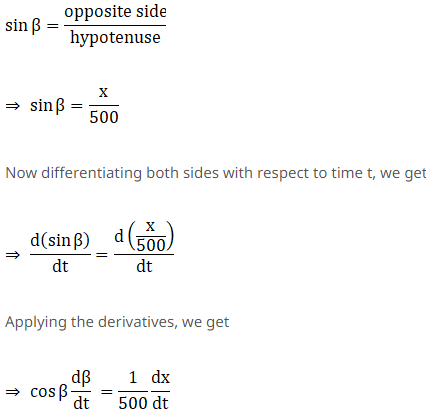
Let the length of the ladder = 5m=500cm be the hypotenuse of the right triangle so formed as shown in the above figure.
Now let β be the angle between the ladder and the floor, so from the figure we can write that

But given the top of the ladder slides downwards at the rate of 10 cm/sec, i.e., dx/dt = 10 cm/sec
So the above equation becomes,

Now substituting equation (iii) in equation (ii), we get

Now when the lower end of the ladder is 2m = 200cm from the wall, i.e., y = 200cm, the above equation becomes,

Hence the rate at which the angle between the floor and the ladder is decreasing when lower end of ladder is 2 metres from the wall is 1/20 rad/sec.
So the correct option is option B.